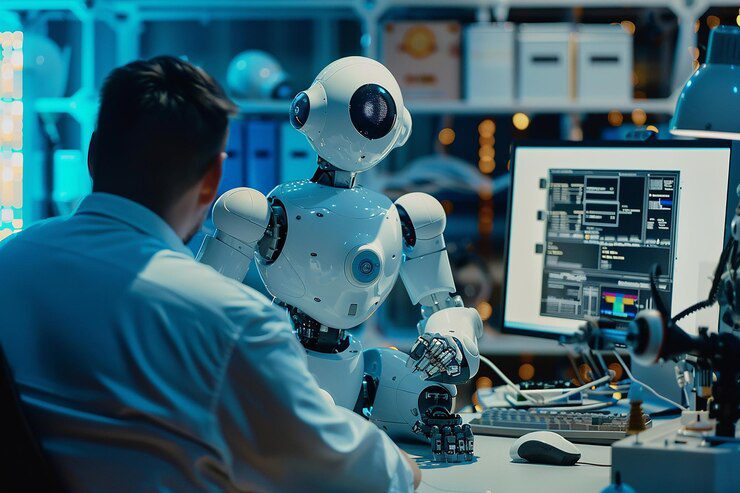The world is undergoing a technological metamorphosis, with robotics and automation at its epicenter. These twin forces are reshaping industries, redefining work, and reimagining the future. It’s akin to witnessing the evolution of humankind, where machines are becoming extensions of human capabilities, amplifying our potential.
Understanding Robotics and Automation
At its core, robotics and automation involve the use of machines to perform tasks traditionally done by humans. Robots, with their precision and tireless work ethic, are capable of handling repetitive, dangerous, or complex tasks with unmatched efficiency. Automation, on the other hand, encompasses a broader spectrum, including software and systems that streamline processes and decision-making.
The Impact on Industries
The influence of robotics and automation is pervasive, touching virtually every sector of the economy.
Manufacturing: Assembly lines have transformed into orchestrated symphonies of machines, producing goods with unparalleled speed and accuracy. Robots handle mundane tasks, freeing human workers for more strategic roles.
Healthcare: From surgical assistance to drug discovery, robotics and automation are revolutionizing patient care. Robotic surgery offers precision and minimal invasiveness, while automated systems streamline administrative tasks.
Logistics and Supply Chain: Warehouses are becoming high-tech fulfillment centers, with robots handling inventory management and order fulfillment. Drones and autonomous vehicles are transforming the way goods are transported.
Customer Service: Chatbots and virtual assistants are becoming the first point of contact for many businesses, providing efficient and personalized customer support.
Table: Impact of Robotics and Automation on Industries
| Industry | Impact |
| Manufacturing | Increased efficiency, enhanced product quality, and reduced labor costs |
| Healthcare | Enhanced patient care, precision surgery, drug discovery |
| Logistics and Supply Chain | Optimized operations, reduced costs, faster delivery |
| Customer Service | Improved efficiency, personalized experiences, 24/7 support |
Challenges and Opportunities
The integration of robotics and automation is not without its challenges. Issues such as job displacement, ethical considerations, and cybersecurity require careful attention. However, the potential benefits are immense. By investing in upskilling and reskilling programs, governments and businesses can mitigate the negative impacts and harness the opportunities created by this technological revolution.
The Future of Work: A Human-Machine Collaboration
The rise of robotics technology and automation inevitably raises questions about job displacement. While it’s true that some jobs will be automated, it’s equally important to recognize the creation of new roles. The future of work will likely involve a collaboration between humans and machines, with humans focusing on higher-level tasks like creativity, problem-solving, and strategic thinking.
To thrive in this new era, workers will need to acquire new skills, such as data analysis, programming, and machine learning. Lifelong learning will become essential for adapting to the evolving job market.
Ethical Considerations
As robotics and automation advance, ethical considerations become increasingly important. Issues such as job displacement, privacy, and AI safety need to be addressed proactively. It’s crucial to develop guidelines and regulations to ensure that technology is used responsibly and for the benefit of society.
The integration of robotics and automation technology is reshaping our world at an unprecedented pace. While challenges and uncertainties exist, the potential benefits are immense. By embracing this technological revolution and adapting to the changing landscape, we can harness the power of automation to create a future where humans and machines work in harmony to achieve extraordinary things.
Conclusion
The convergence of robotics and automation is reshaping industries, transforming workplaces, and redefining the boundaries of human potential. It’s a dynamic interplay between man and machine, where collaboration and innovation are key.
While challenges such as job displacement and ethical considerations persist, the potential benefits of these technologies are immense. From increased productivity and efficiency to advancements in healthcare and environmental sustainability, robotics and automation offer a glimpse into a future of unparalleled progress.







